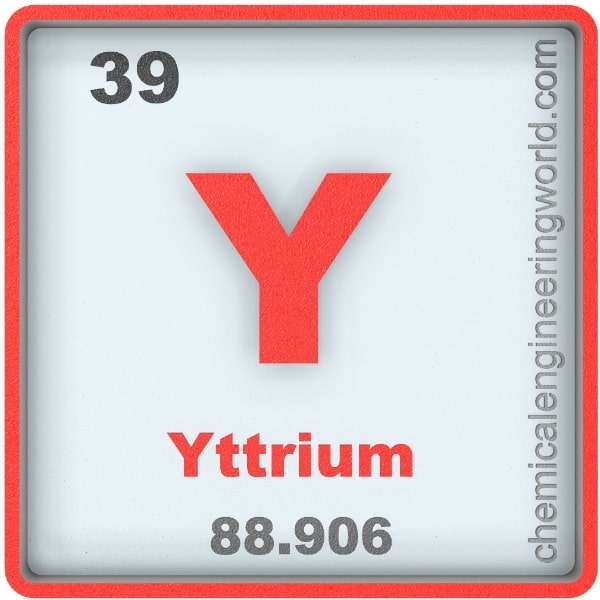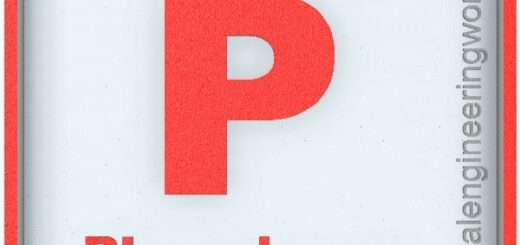Yttrium Element Properties and Information

Yttrium Element Properties and Information
Yttrium is thirty-ninth element on the periodic table. Elements are arranged in the periodic table on the basis of the atomic number. Atomic number is the number of protons in the nucleus of the atom. Yttrium has an atomic number of 39. It is located in the Group 3 and Period 5 of the periodic table of elements. It is denoted by Y. The name is given after the ore in which it was first found, ytterbyte and the name of the mineral comes from the village it was found, Ytterby in Sweden.
Johan Godolin is credited by the discovery of this element. He was handed a black rock by Karl Arrhenius in 1787. John Gadolin announced the black rock and announced in 1794 that 38% of the material is a new ‘earth’, it was called so because the composition referred to yttrium oxide which couldn’t be further reduced by charcoal. The metal itself was isolated by Friedrich Wöhler and made by reacting yttrium chloride and potassium.
Yttrium is never found in nature as a free element. It is almost always found combined with lanthanides.
Physical Properties
- Yttrium is soft, silvery-white metal which is lustrous and has a highly Crystalline nature.
- The atomic mass of yttrium is 88.9059
- The melting point of yttrium is 1500°C
- The boiling point of yttrium is 3336°C
- The density of yttrium is 4470 in S.I. units at 20°C
- Yttrium-89 is the only stable isotope and also the only isotope found in Earth’s crust.
Chemical Properties
- The pure element yttrium if left exposed to air forms a passivation layer of yttrium oxide. Thus it remains stable if left in ambient temperature and pressure.
- If yttrium is powdered then it becomes highly unstable, it spontaneously ignites above 400°C.
- Yttrium is able to react with nitrogen at 1000°C forming yttrium nitride.
- Yttrium is quite similar to rare-earth elements but it is not a rare-earth element. Though, it is mostly found in nature along with rare-earth elements.
Methods of Production
Ion-exchange chromatography: The mixed ores containing yttrium are collected and dissolved together in sulphuric acid and then subjected to fractionation by principle of ion-exchange chromatography. The oxalic acid is added to convert yttrium oxalate to yttrium oxide by reacting in presence of oxygen. The yttrium oxide is further converted to yttrium fluoride by reaction with hydrogen fluoride. If counter-ions used are nitrates then light lanthanides are removed. If counter-ions used are thiocyanates then heavy lanthanides are removed. In this manner highly pure yield of yttrium metal is obtained amounting to 99.99% of purity.
Relevance in Chemical and Related Industries
- Silicon Nitride: Yttrium is used as a sintering additive for the production of porous silicon nitride.
- Catalyst: Yttrium compounds are used as catalysts for ethylene polymerization.
- Grain-sizes: Small amounts of yttrium is used to reduce the grain size of chromium, molybdenum, titanium, and zirconium.
Relevance in Other Industries
- Television: The cathode ray tubes of colour television has red component. The red colour is emitted from europium but it is yttrium which collects energy from the electron gun and passes it to phosphorus. The yttrium, phosphorus, and europium form one unit to serve the purpose.
- LEDs: Yttrium Aluminium Garnet (YAG) is an important element in white LED.
- Metal: Yttrium is used in form of pure metal on the electrodes of some spark plug.
- Superconductor: Yttrium is a key component in the YBCO superconductor which stands for yttrium barium copper oxide.
Health Effects on Exposure
- Inhalation: Long term exposure in work places through the air causes lung embolism and raises the chances of getting lung cancer.
- Accumulation: When the concentration of yttrium in body increases it becomes a threat to the proper functioning of liver.
Effects on Surroundings
- Water-animals: It damages the cell membranes of the water based organisms which has disastrous influence on nervous and reproductive system.
Reference:
https://en.m.wikipedia.org/wiki/Yttrium
































